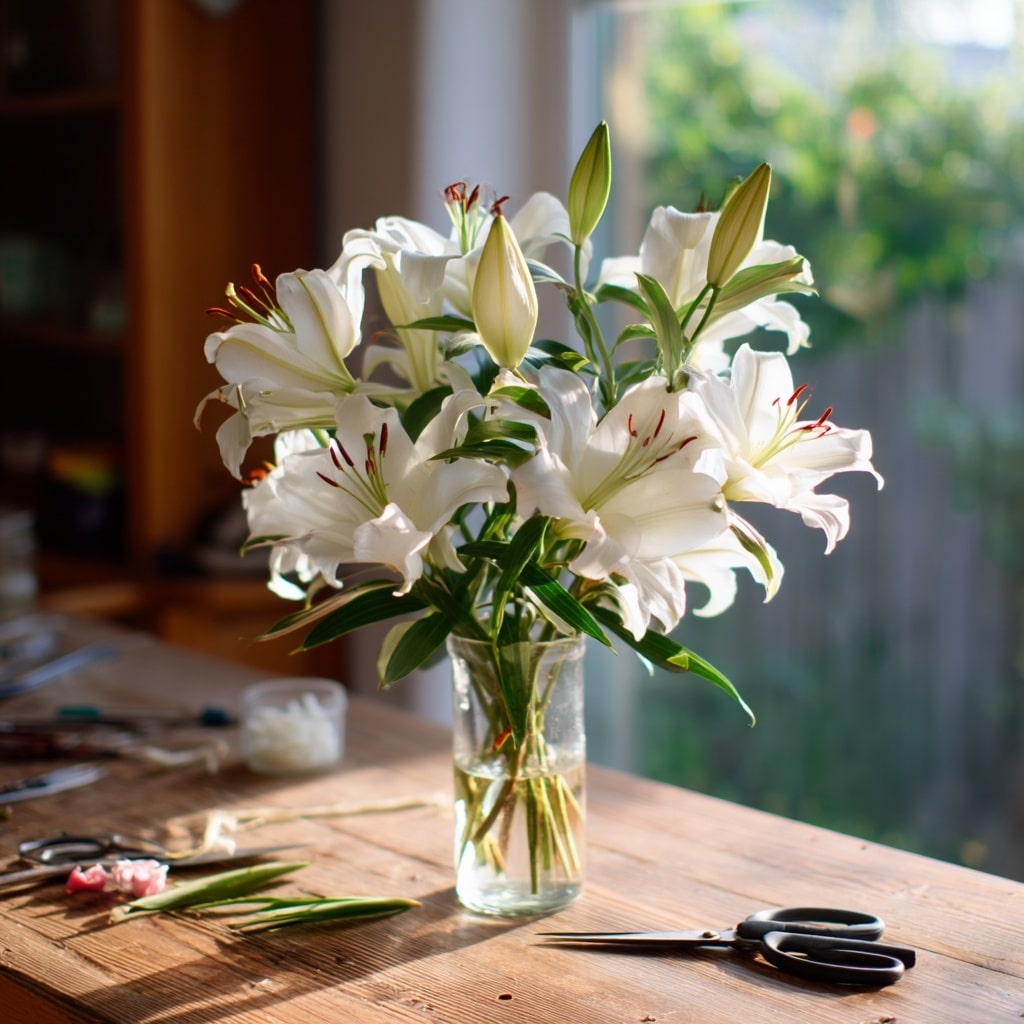Flower lily is more than just a stunning garden highlight—it’s a timeless symbol of grace, strength, and elegance. With its striking trumpet-shaped blooms, bold colors, and delicate fragrance, the flower lily continues to captivate gardeners and floral enthusiasts around the world. Whether planted in the soil of your backyard or featured in a vase on your table, this perennial beauty adds a touch of sophistication to any space.
Growing flower lilies isn’t just for seasoned gardeners. With a few simple care tips, anyone can enjoy their vibrant blooms and lush foliage year after year. In this guide, we’ll walk you through the different types of lilies, how to care for them indoors and out, and what makes this flower such a powerful symbol throughout history.
Table of Contents
Care Tips for Cut Flower Lilies in a Vase
Cut flower lilies are showstoppers in any bouquet, but their elegance can fade quickly without proper care. To keep them looking fresh and vibrant for as long as possible, follow these simple yet effective steps.
📝 Before Arranging:
- Choose lilies with buds that haven’t fully opened—they’ll last longer and bloom beautifully at home.
- Use a sharp, clean knife to cut the stems at a diagonal angle. This increases water absorption.
- Remove any lower leaves to prevent them from sitting in water, which can cause bacterial growth.
💧 Vase Setup:
- Fill the vase with lukewarm water and mix in fresh cut flower food.
- Change the water every 2–3 days to keep it clean and odor-free.
- Avoid placing lilies in direct sunlight, near heaters, or in drafty spots.
⚠️ Extra Tips:
- Keep lilies away from ripening fruit—ethylene gas can make them wilt faster.
- Worried about pollen stains or strong scent? Snip off the stamens before the flowers fully open.
- If pollen does land on clothes, dab it off gently with sticky tape—don’t rub, or it’ll set into the fabric.
With these tricks, your cut flower lily arrangement will stay fresh and eye-catching for days on end.
Flower Lily Characteristics and Growth Habits

The flower lily (genus Lilium) is one of nature’s most striking creations, easily recognized by its large, trumpet-shaped blooms and tall, elegant stems. Each flower typically has six broad petals, often with dramatic features like spots, ruffled edges, or a glossy finish. Depending on the variety, blooms can range from a modest 7 cm to an impressive 25 cm in diameter.
Color options are abundant—white, pink, orange, red, yellow, and even deep purple—making the flower lily a versatile choice for both gardens and floral arrangements. Some varieties are highly fragrant, while others have little to no scent, ideal for scent-sensitive households.
Lilies are perennial bulbs, meaning they come back year after year. They die back in winter and sprout again each spring, typically blooming between June and September, depending on the species. Their upright, unbranched stems can grow from 60 cm to over 1.5 meters, giving vertical height to garden beds or patio containers.
Belonging to the Liliaceae family, the flower lily shares its lineage with tulips and hyacinths. Unlike some delicate garden plants, most lilies are robust, making them perfect for sunny borders, balcony pots, and mixed flower beds.
Popular Types of Flower Lily
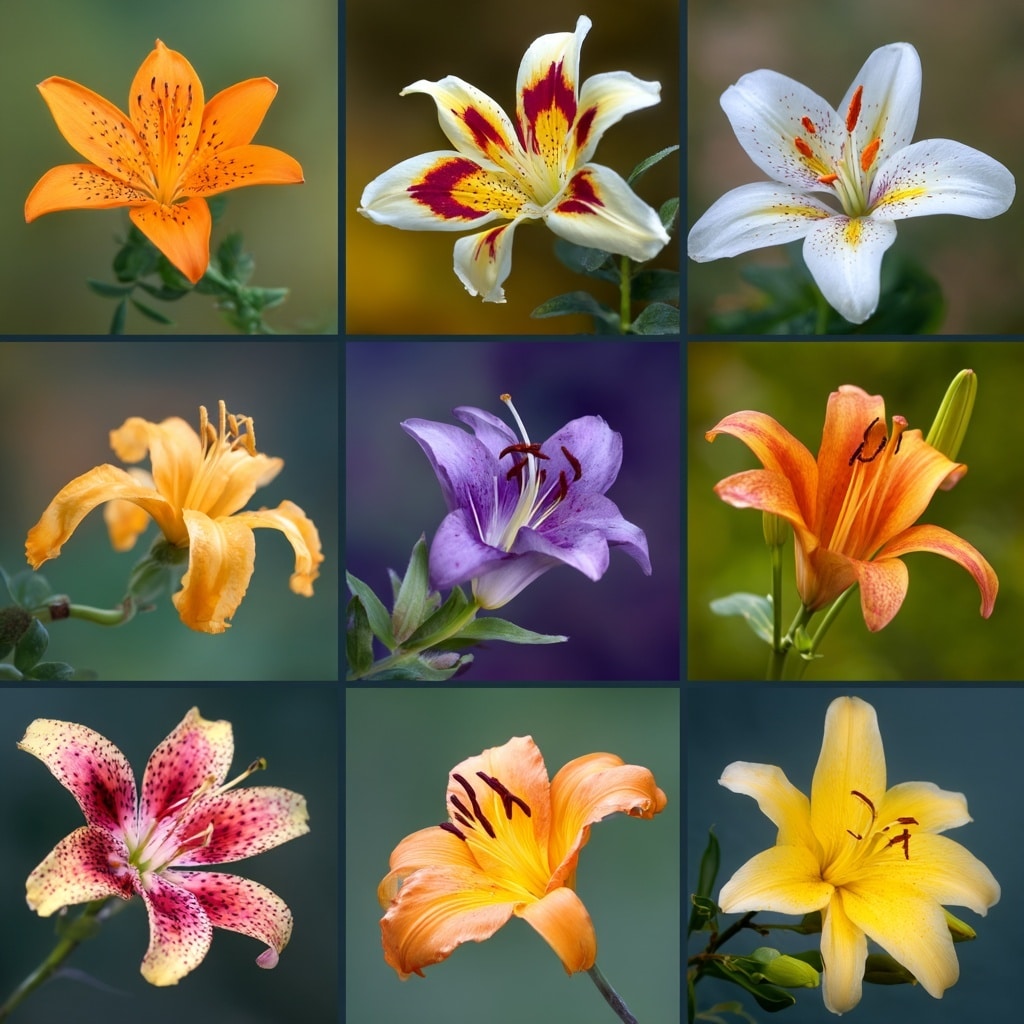
With over a hundred varieties, the flower lily offers something for every gardener, from bold, dramatic blossoms to soft, pastel blooms. Here are the most popular types you’ll find in home gardens and floral shops:
🟠 Asiatic Lilies
Asiatic lilies are known for their bright, cheerful colors—think red, yellow, orange, and pink. These blooms are unscented, making them ideal for allergy-prone homes. They flower early in the summer and grow up to 1 meter tall, with straight petals and compact clusters.
🐆 Tiger Lilies
A standout from the Asiatic group, tiger lilies feature orange or red petals with dark speckles. The blooms face downward and give off a wild, untamed beauty. They’re hardy and bloom mid to late summer.
🌸 Oriental Lilies
These are the queens of fragrance. Oriental lilies have large, heavily scented blooms in luxurious shades like white, pink, and burgundy. With wavy petals and outward-facing flowers, they can grow up to 1.5 meters and often need staking.
🌼 Madonna Lily (Lilium candidum)
A true classic, the Madonna lily is known for its pure white, fragrant flowers. It’s steeped in history and tradition, often symbolizing purity and used in religious imagery.
🎺 Longiflorum Lilies (Trumpet Lilies)
Also called Easter lilies, these have long, trumpet-shaped blooms and a strong fragrance. They bloom in early to mid-summer and grow between 90 cm and 1.5 meters tall.
🌙 Martagon Lilies (Turkish Lilies)
These unique lilies have turban-shaped petals that curl backward and hang downwards. They often bloom in deep purples, reds, yellows, and whites, and flower earlier than most varieties.
🌷 Hybrid Varieties
Modern breeders have created hybrids like:
- LA Hybrids (Longiflorum × Asiatic): easy to grow with large flowers and minimal scent.
- OT Hybrids (Oriental × Trumpet): bold, towering lilies with a sweet fragrance and extended bloom time.
Each variety brings its own charm, letting you mix and match styles, scents, and colors in your garden or bouquets.
How to Grow Flower Lily in the Garden
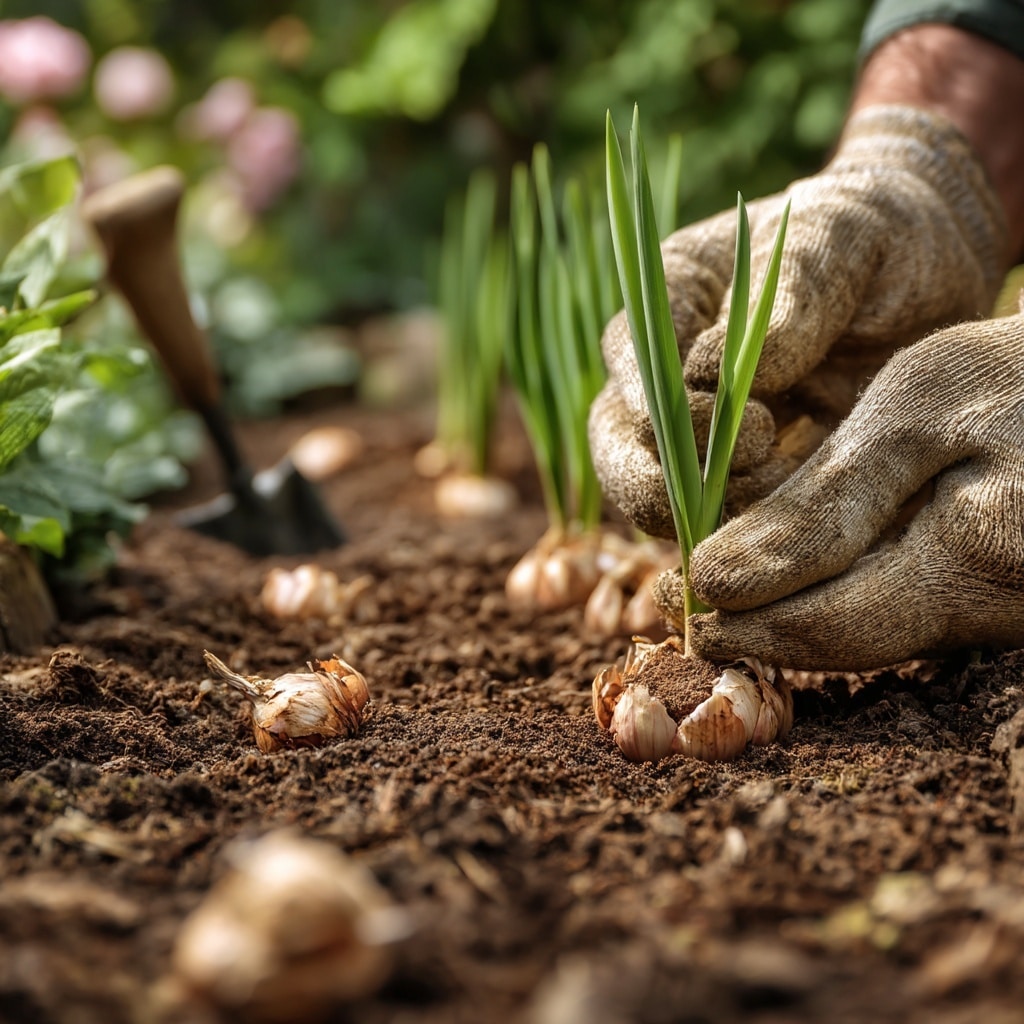
Planting a flower lily in your garden is surprisingly easy—and incredibly rewarding. These resilient perennials thrive in a variety of conditions with just a little attention. Whether you’re working with flower beds, containers, or a balcony pot, here’s how to give your lilies the best possible start.
📦 When and How to Plant
- Plant bulbs in early spring or fall—right after purchasing.
- Dig holes 10–15 cm deep and space bulbs 20–40 cm apart.
- Always plant with the pointy tip facing upward.
- Larger bulbs usually produce larger, more robust flowers.
☀️ Light and Location
- Flower lilies love sun—give them at least 6 hours of direct light daily.
- Ideal spots: borders, raised beds, or large containers with good drainage.
- Lilies prefer having their “heads in the sun and feet in the shade.”
- Tip: Surround them with low-growing leafy plants or mulch to shade the roots.
🌿 Soil and Watering
- Use well-drained, fertile soil—avoid soggy areas where bulbs could rot.
- Water deeply after planting and keep soil moist but not waterlogged.
- Mulch around the base to retain moisture and suppress weeds.
💪 Support and Fertilizing
- Tall varieties may need staking to prevent flopping in the wind.
- Apply a balanced organic fertilizer in spring to boost growth and flowering.
- Potted lilies especially need regular feeding during the growing season.
♻️ Aftercare and Reblooming
- You can leave bulbs in the ground through winter—they’re hardy.
- To maintain vigor, replant every 4–5 years in a new spot after flowering.
With the right placement and a bit of seasonal care, your flower lilies will reward you with years of spectacular summer blooms.
What to Do After Flower Lilies Bloom
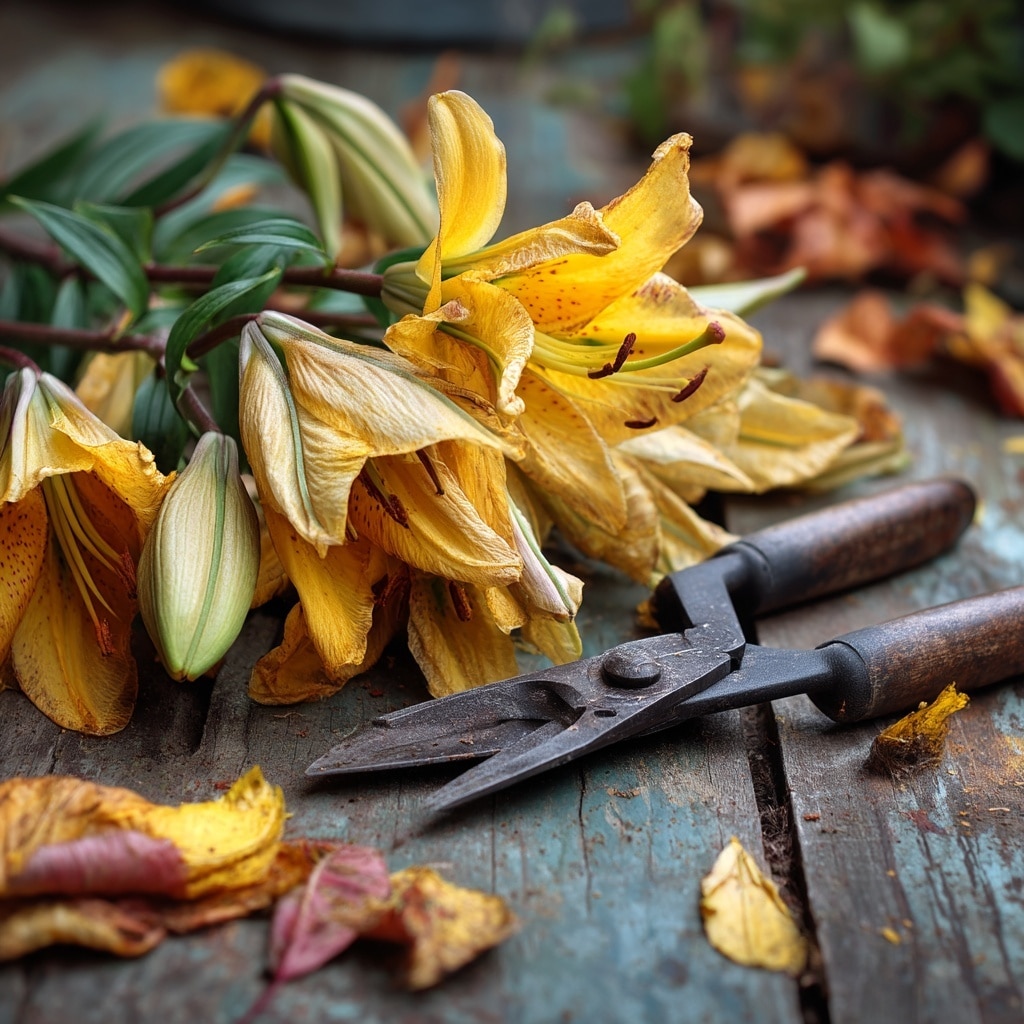
Once the blooming season ends, flower lily plants still need attention to ensure healthy regrowth next year. Many gardeners make the mistake of cutting them back too soon—but proper post-bloom care is essential for maintaining strong bulbs.
✂️ Deadheading and Stem Removal
- As soon as blooms fade, snip off the flower heads. This prevents the plant from wasting energy on seed production.
- Leave the stems and leaves intact until they turn yellow and die back naturally—this allows the bulb to store energy.
🔪 When to Prune
- Once the entire plant yellows and dries, cut the stems down to just above the soil line.
- Avoid pulling stems out by hand—they can damage the bulb.
🌾 Winter Preparation
- In colder zones, apply a layer of mulch or bark chips around the base to insulate the bulbs during frost.
- For potted lilies, move them to a sheltered, frost-free area over winter.
🌱 Spring Cleanup
- Remove any dead plant material before new shoots emerge.
- Check for signs of overcrowding—divide or transplant bulbs if necessary.
With the right aftercare, your flower lily bulbs will rest well through winter and come back even stronger next season.
Symbolism and Meaning of Flower Lily

The flower lily has long been a symbol of powerful emotions and sacred traditions. Its elegant form and vibrant colors have given it meaning across cultures, religions, and centuries. Whether in a wedding bouquet or a memorial arrangement, the flower lily speaks volumes without saying a word.
🌼 Universal Meanings
- Purity & Innocence: Especially white lilies, which are often seen in weddings and religious ceremonies.
- Femininity: Ancient Greeks and Romans associated lilies with motherhood and fertility.
- Love & Passion: In Victorian times, gifting a lily was a romantic gesture.
- Grief & Remembrance: Lilies are a common feature in funeral bouquets, representing the soul’s return to peace.
- Renewal: As a perennial flower, the lily also symbolizes rebirth and the cycles of life.
🎨 Color-Specific Symbolism
Each lily color carries its own message:
- White: Purity, virtue, peace
- Pink: Prosperity, admiration, femininity
- Red: Passion, love, desire
- Orange: Confidence, wealth, pride
- Yellow: Gratitude, cheerfulness, good health
- Purple: Spirituality, dignity, royalty
Including a flower lily in your home or garden isn’t just a design choice—it’s a way to connect with centuries of symbolism, emotion, and meaning.
Origins, History, and Myths of the Flower Lily

The flower lily has been revered for thousands of years—not just for its beauty, but for its deep roots in history, myth, and culture. Native to parts of Asia, Europe, and North America, lilies grew wild in mountain ranges, meadows, and forests long before they were cultivated in gardens.
🏺 Ancient Civilizations
Lilies appeared in ancient texts and art as early as 1500 BCE. In Egypt, they were tied to fertility rituals. In China, they were planted in temple gardens and used in traditional medicine.
🏛️ Greek and Roman Myths
In Greek mythology, the lily was linked to Hera, queen of the gods. According to legend, lilies sprang from drops of her milk that fell to earth, symbolizing divine femininity and motherhood.
Romans, too, celebrated the flower lily—brides wore lily crowns to bless them with purity and fertility in marriage.
✝️ Christian Symbolism
Over time, the Madonna lily became a religious icon in Christianity, representing the Virgin Mary and appearing in countless paintings and sculptures. The white lily came to signify spiritual purity and grace.
🏰 Medieval and Renaissance Gardens
During the Middle Ages, monks cultivated lilies in monastery gardens for both their beauty and healing properties. By the Renaissance, they were a luxury in aristocratic landscapes across Europe.
🌎 Global Spread
Today, the flower lily is grown and cherished worldwide, prized for both its ornamental value and its timeless symbolism.
Frequently Confused Plants: What’s Not a True Flower Lily?
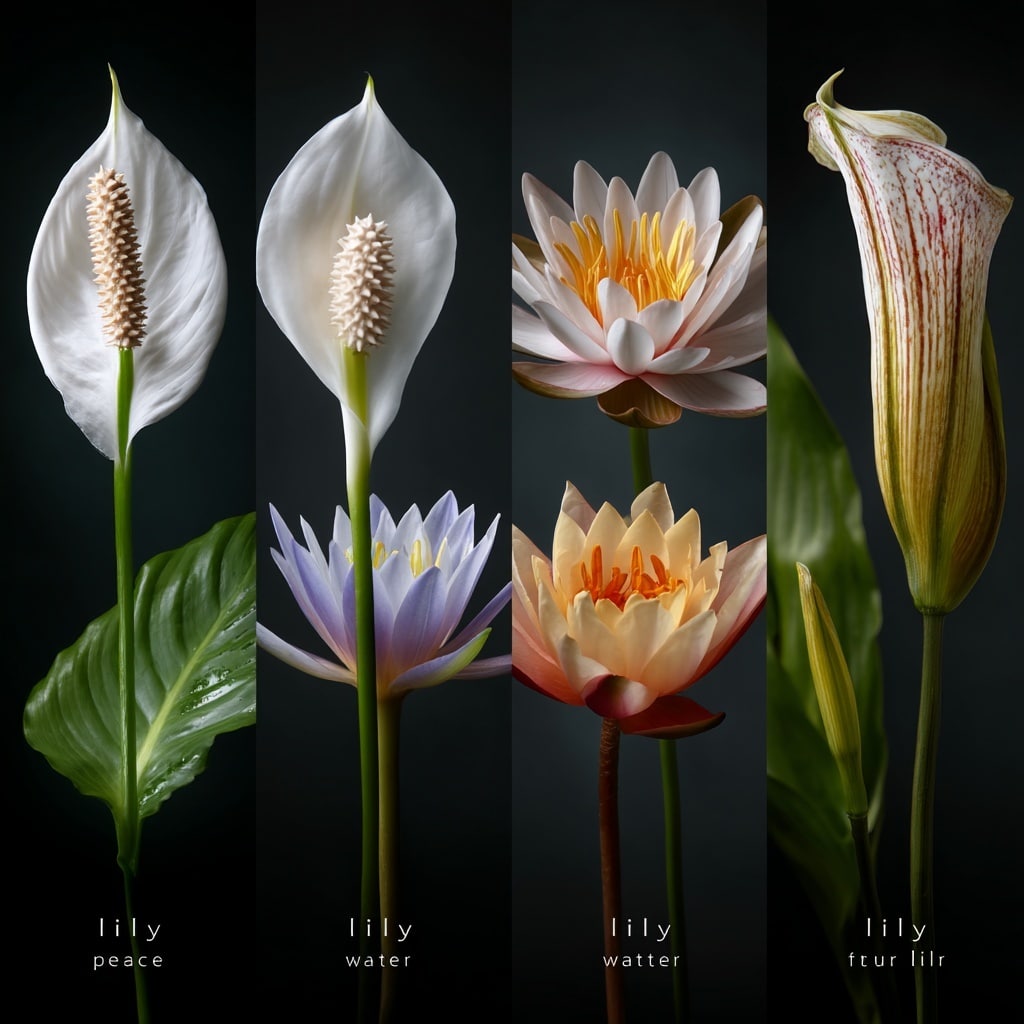
Not all “lilies” are created equal. Many popular plants include “lily” in their names, but only those in the genus Lilium are true flower lilies. Knowing the difference helps gardeners choose the right plant for their needs and understand proper care.
🌊 Common Lily Impersonators
- Water Lily (Nymphaea)
Grows in ponds, not soil. Completely unrelated to true lilies. - Peace Lily (Spathiphyllum)
A tropical houseplant known for its white spathe flower—not a bulb plant, and not in the lily family. - Daylily (Hemerocallis)
Looks similar to true lilies but grows from tuberous roots, not bulbs. Each bloom lasts just one day. - Lily of the Valley (Convallaria majalis)
A sweet-smelling woodland plant with tiny bell-shaped flowers. Despite the name, it’s not a Lilium species. - Calla Lily (Zantedeschia)
Known for its elegant funnel-shaped flowers. Technically a member of the Araceae family, not Liliaceae. - African Lily (Agapanthus)
A striking summer bloomer with globe-like blue or white flowers. Again, not a true lily.
✅ What Makes a Flower Lily “Real”?
True flower lilies:
- Grow from bulbs
- Have six petals (often trumpet-shaped)
- Belong to the Liliaceae family
- Are classified under the genus Lilium
When in doubt, always check the botanical name. If it doesn’t say Lilium, it’s not a true flower lily.
Are Flower Lilies Poisonous?
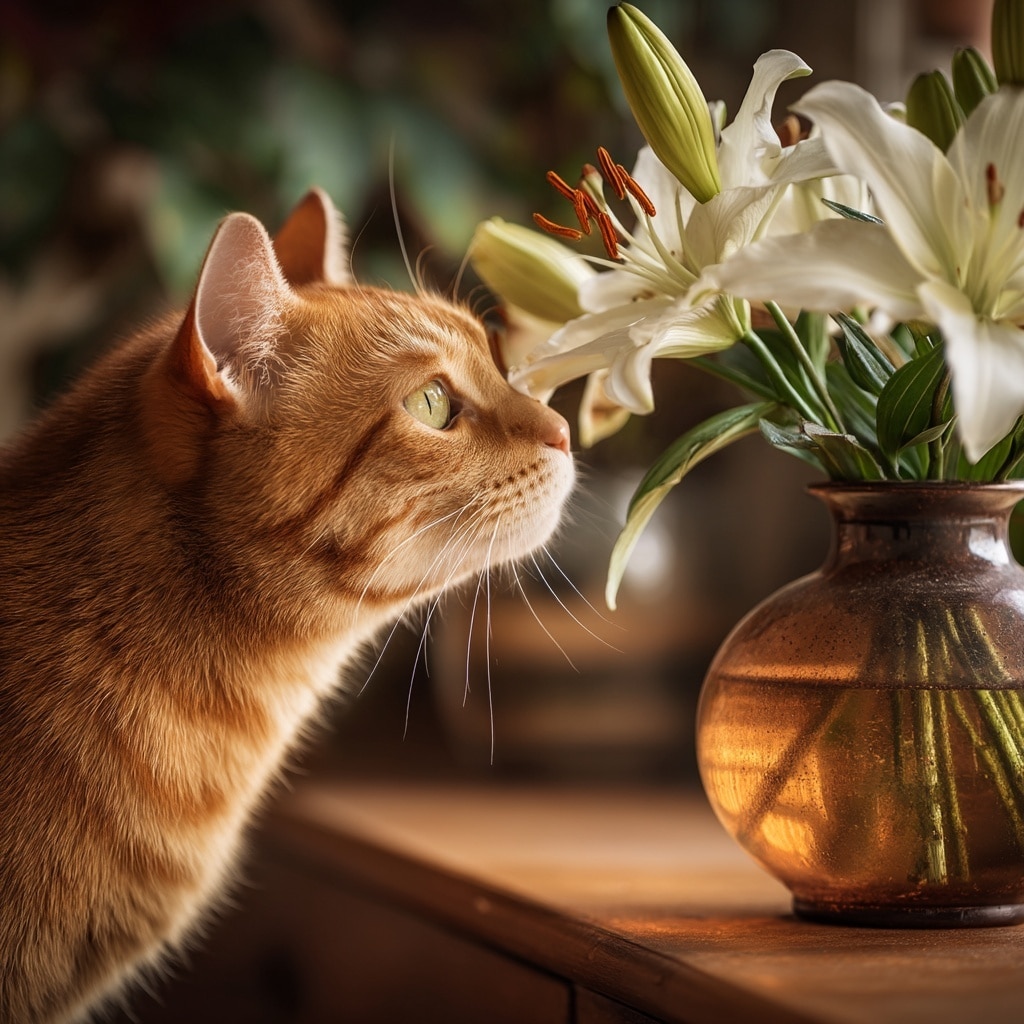
As beautiful as the flower lily is, it’s important to know that all parts of the plant are toxic—especially for pets. While lilies are safe to touch and handle with care, ingestion can be dangerous.
🐱 Especially Toxic to Cats
For cats, even a tiny amount—like licking pollen from a paw—can lead to kidney failure or worse. Every part of the lily is toxic: petals, leaves, stems, pollen, and even the water in the vase.
If you suspect your cat has come into contact with a flower lily, contact a vet immediately. Time is critical.
🐶 Dogs and Humans
Dogs may experience symptoms like nausea, drooling, vomiting, or diarrhea if they chew on lilies. In humans, especially young children, ingestion can lead to mild irritation, abdominal pain, or skin rashes.
💡 Safety Tips
- Keep lilies out of reach of pets and kids.
- Consider stamen-free varieties like Roselilies for lower pollen risks.
- Always wash your hands after handling cut lilies or replanting bulbs.
- Dispose of old bouquet water safely—it may contain toxic residues.
While the flower lily brings beauty to your space, it’s vital to handle it with awareness—especially if you share your home with curious animals.
Are There Pollen-Free Flower Lily Varieties?

If you love the elegance of the flower lily but dread the pollen mess—or strong scent—there’s good news: yes, pollen-free lilies do exist.
🌹 Double-Flowered Lilies: A Clean Alternative
Varieties like Roselily are bred with double layers of petals and no stamens, meaning:
- No pollen stains on your tablecloth, clothes, or furniture
- Reduced fragrance, ideal for scent-sensitive households
- The same rich colors and impressive bloom size as traditional lilies
These lilies are especially popular in weddings, public spaces, and allergy-conscious homes.
🧽 Less Cleanup, Same Impact
Roselilies and other pollen-free hybrids maintain the drama of classic lilies without the hassle. They’re also a safer choice if you’re placing arrangements near light fabrics or frequently used surfaces.
So, if pollen has held you back from enjoying the flower lily, consider switching to stamen-free varieties—clean, low-maintenance, and just as stunning.
Conclusion
The flower lily is more than a garden favorite—it’s a timeless symbol of beauty, elegance, and renewal. Whether you’re growing it outdoors, displaying it in a vase, or simply admiring its meaning, this flower offers year-round charm. With the right care, safe placement, and variety choice, you can enjoy its blooms season after season.
From bold Asiatic lilies to fragrant Orientals and mess-free Roselilies, there’s a perfect lily for every gardener.


